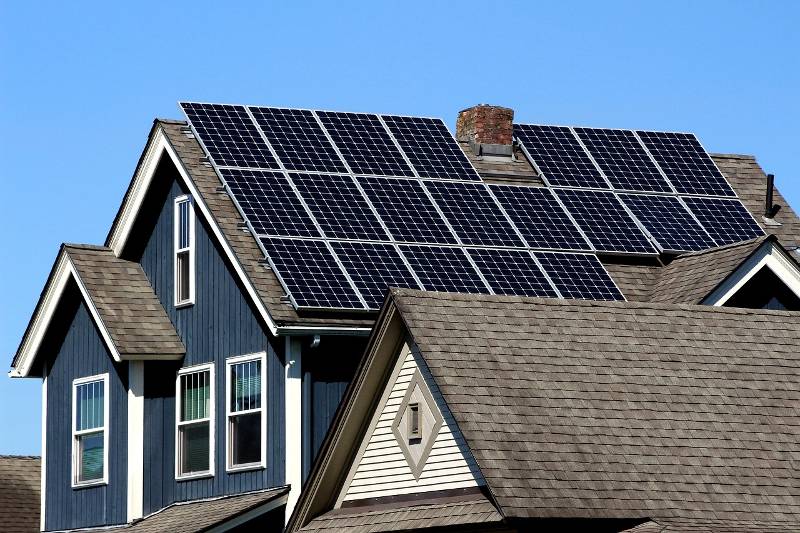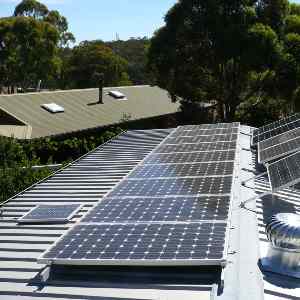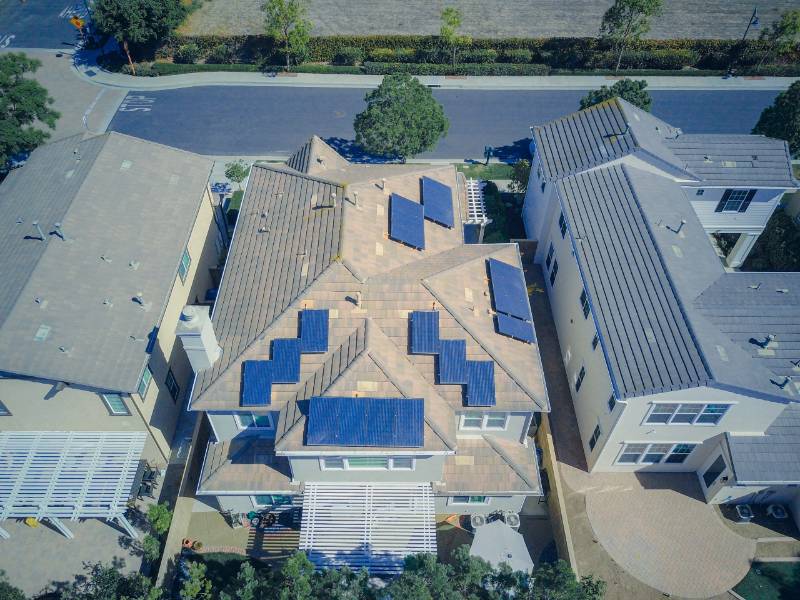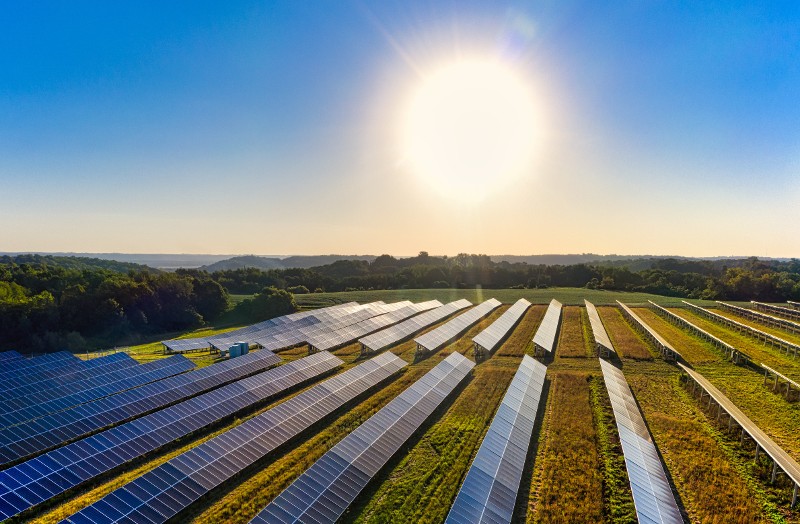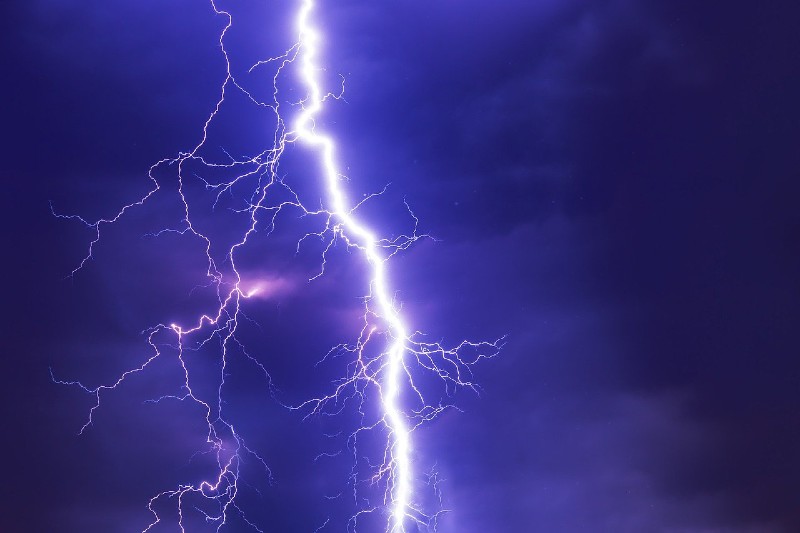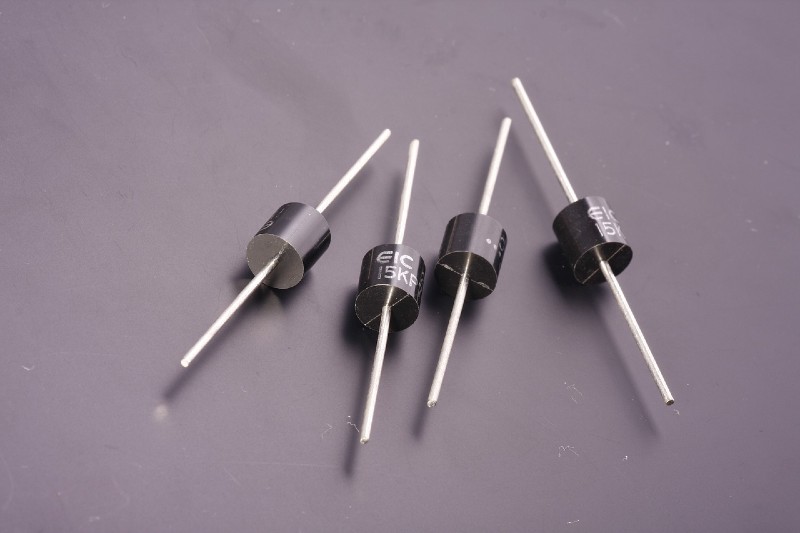As most of us know, solar panels harness solar power and convert it into electrical energy.
But do they need an inverter to function?
While these panels produce direct current (DC), our home appliances typically run on alternating current (AC).
That’s where an inverter comes in, transforming DC into AC, thus making the energy from solar panels suitable for everyday use.
In this article, I’ll explain the crucial role of an inverter in solar systems, detail its types, and guide you on selecting the right one to maximize your solar energy usage.
Key Takeaways
- Solar inverters convert DC from solar panels to AC for home use, transforming and mimicking AC through transistors and transformers.
- Inverter types include string inverters for panel series, hybrid inverters for battery integration, and micro-inverters for individual panel efficiency.
- Inverter’s maintenance involves cleaning air intakes to prevent overheating, ensuring proper cooling, and monitoring error codes for timely issue resolution.
- It’s better to select inverters based on efficiency (80% to 95%), with essential protection features like over-voltage and over-temperature safeguards.
- You should choose an inverter with an appropriate warranty (10-12 years for string inverters, up to 25 for micro-inverters/power optimizers) to match the system’s lifespan.
How Do Solar Inverters Work?
A solar inverter works by transforming the direct current (DC) output from your solar panels into alternating current (AC) at 120V/240V, which is what your home devices use.
Here’s how it breaks down: Solar panels, or photovoltaic (PV) cells, are made up of materials like silicon or aluminum gallium that form layers.
These layers create a junction connecting the negative and positive sides.
When sunlight hits these semiconductor layers, it energizes the electrons, creating a flow of DC between the negative and positive layers.
This generated DC can either be stored in batteries for later use or sent straight to an inverter.
Once the DC reaches the inverter, the inverter pushes the DC through a series of transistors that switch on and off rapidly.
This action generates two alternating sides of current, effectively mimicking AC.
This manipulated current is then passed through a transformer within the inverter, producing AC output that can power your home.
Related article: How To Read Inverter Specifications?
What Are the Different Types of Solar Inverters?
1. String Inverters
String inverters connect a series, or “string,” of solar panels.
All the panels in the string send their produced direct current (DC) electricity to a single inverter.
However, since all the panels in a string are connected to one inverter, if one panel underperforms (due to shade, dirt, or damage), it can lower the performance of the entire string.
This is similar to how old Christmas tree lights worked—if one bulb went out, the whole string of lights wouldn’t work.
Despite this, string inverters have several strong points.
They’ve been around the longest, so they’ve been well-tested and refined over the years, making them quite reliable.
They are also more affordable than other types of inverters, making them an attractive option if budget is a significant consideration.
String inverters are also easier to install and maintain.
You can install them in a single location, often on the side of a building or near a ground-mounted solar array, making them accessible for maintenance or replacement.
2. Hybrid Solar Inverters
Hybrid solar inverters are like the multitaskers of the solar power world.
They do a bit of everything, making sure you get the most out of your solar panels.
You’ll need to add some batteries to your setup, but once you do, these inverters are great at juggling the power around.
They help charge up the batteries with DC power and also turn some of that power into AC for your home and even send some back to the grid.
What’s cool about these inverters is how smart they are.
They’ve got this tech called MPPT (Maximum Power Point Tracking) that keeps an eye on how much power your battery needs and figures out the best times to pull power from the grid, especially when it’s cheaper.
So, it’s always looking out for ways to save you money and make sure you’re using energy efficiently.
And here’s another nifty thing: if there’s ever a hiccup or something goes wrong, the inverter doesn’t just quit.
It switches to standby mode, so it’s ready to get back to work as soon as everything’s okay again.
3. Micro-inverters
Micro-inverters take a different approach compared to string inverters or hybrid inverters.
Instead of one big inverter handling the whole solar array, each solar panel gets its little inverter.
That’s right, every single panel has a micro-inverter attached to it right there on the roof.
This setup has some neat benefits.
For starters, since each panel operates independently, if one panel gets shaded or dirty, it doesn’t drag down the whole system’s performance.
This can help in situations where parts of your roof get more shade than others.
Another cool thing about micro-inverters is that they make monitoring and troubleshooting your solar array easier.
You can see exactly how each panel is performing.
If something’s not right with one panel, you’ll know which one it is and won’t have to guess or check each panel one by one.
Although installation can be a bit more work since each panel needs its inverter, the flexibility and efficiency gains can be worth it.
Plus, micro-inverters tend to extend the life of your solar setup because they deal with fewer high-voltage power conversions, which can be tough on equipment.
4. Power Optimisers
Power optimizers act as a middle ground between microinverters and traditional string inverters.
They’re installed on each solar panel, like microinverters, but instead of converting DC to AC right there on the roof, they tweak or “condition” the DC electricity before sending it off to a central string inverter.
This conditioning helps make the whole system more efficient, especially in tricky situations like when some panels are in the shade or don’t perform as well as others.
With power optimizers, a shaded panel doesn’t drag down the performance of the whole bunch.
They ensure that each panel works at its best, then pass the DC power to the string inverter to switch it over to AC for your home’s use.
Monitoring is another area where power optimizers shine.
You can check how each panel is doing through an online portal, which is great for spotting issues quickly.
Related article: Why Do Solar Cells Need An Inverter?
What Size Inverter Do I Need for Solar Panels?
When choosing the size of an inverter for your solar panels, the goal is to match the inverter’s capacity to the amount of power your solar panels are expected to produce.
If the inverter is too small, it won’t be able to handle all the power your panels produce, leading to potential energy loss.
Conversely, an overly large inverter might not be as efficient, potentially increasing costs without providing proportional benefits.
Related article: How Do Solar Panels Work?
Let’s walk through an example to illustrate how to determine the appropriate inverter size:
Say you have a solar panel setup with a total capacity of 300 watts.
This could be, for example, three 100-watt panels (3 x 100W = 300W).
To maximize the efficiency of your solar power system, you would ideally select an inverter that can handle at least 300 watts.
Related article: How To Reset Inverter?
What Are the Factors to Consider When Choosing a Solar Inverter?
1. Output Voltage Stability
In photovoltaic systems, solar cells generate electricity that gets stored in batteries, which solar inverters convert into AC.
But it’s important to note that battery output voltage can vary—for instance, a 12V battery might fluctuate between 10.8V and 14.4V.
That’s why choosing an inverter that ensures stable output voltage is crucial.
Ideally, a good inverter should limit the steady-state output voltage variation to within 5% and manage unexpected load changes without exceeding a 10% variance.
2. Rated Output Frequency
Some devices, especially those with motors like washing machines and refrigerators, need a specific frequency to run smoothly—usually 50Hz.
If the frequency is off, even by a little, it can cause these devices to overheat, which can mess with their efficiency and shorten their lifespan.
That’s why you need to pick a solar inverter that keeps the frequency stable, right around 50Hz, with less than a 1% deviation under normal conditions.
This stability ensures your appliances operate efficiently and last as long as they’re supposed to, making the inverter’s rated output frequency a key factor to consider.
3. Waveform Distortion of Output Voltage
Waveform distortion in solar inverters is about how much the output voltage strays from a perfect sine wave.
It’s important to keep this distortion low, ideally under 5% for sine wave inverters, or up to 10% for single-phase outputs.
Why does this matter?
Well, too much distortion can lead to extra losses in devices that use inductive loads, causing them to overheat and potentially get damaged.
This isn’t just a safety concern; it also affects how efficiently your solar power system runs.
4. Load Power Factor
The load power factor of a solar inverter is a key indicator of its efficiency, especially when dealing with inductive or capacitive loads.
Sine wave inverters have a power factor between 0.7 and 0.9, but the closer to 0.9, the better.
Why does this matter?
A lower power factor means the inverter needs to be larger to handle the same amount of work, which can drive up costs.
It also leads to increased apparent power in the system’s AC circuit, boosting the loop current and causing more energy losses.
Therefore, a higher load power factor translates to a more efficient and cost-effective solar power system.
5. Rated Output Current (Or Rated Output Capacity)
The rated output current of a solar inverter is the maximum current it can deliver, tailored to the specified load power factor.
Inverters sometimes express their capacity in units like VA (volt-amperes) or KVA (kilovolt-amperes).
This capacity is calculated by multiplying the rated output voltage by the rated output current, assuming a perfect scenario where the output power factor is 1, meaning the load is purely resistive.
Thus, you should choose an inverter whose rated output current or capacity aligns with your solar system’s demand.
6. Solar Inverter Efficiency
Solar inverter efficiency indicates how effectively an inverter converts input power to output power, typically shown as a percentage.
This efficiency, usually gauged under conditions like 80% of a pure resistive load, is vital for minimizing costs and maximizing the value of photovoltaic systems.
Most modern inverters have efficiencies ranging from 80% to 95%, with the benchmark for low-power inverters set at no less than 85%.
This is why I always recommend -in the worst case- opting for an inverter with a minimum efficiency of 85%.
Even in less-than-ideal conditions, such an inverter ensures that you’re not losing more than 15% of the solar energy converted.
7. Protection Measures
A high-performance solar inverter should include some protection measures to prevent damage to the inverter and system components during abnormal conditions.
Here are key protection measures to look for:
- Input Over-Voltage Protection: This feature prevents damage to the inverter by shutting it down or alerting the user when input voltage exceeds a safe threshold, typically 130% of the rated level.
- Input Under-Voltage Protection: It safeguards the inverter by reacting when the input voltage drops below 85% of the nominal value, ensuring the system isn’t operating under harmful low voltage conditions.
- Over-Current Protection: This protection activates when the current exceeds 150% of the rated value, protecting the inverter from damage due to excessive current or short circuits.
- Output Short-Circuit Protection: It quickly responds to any short-circuiting on the output side, typically within 0.5 seconds, to prevent damage to the inverter and connected devices.
- Input Converse-Connection Protection: This feature prevents damage if the input connections are reversed, ensuring the inverter isn’t compromised by incorrect installation.
- Lightning Protection: Essential for protecting the inverter from sudden voltage spikes caused by lightning, preserving the integrity of the system during storms.
- Over-Temperature Protection: It monitors the inverter’s temperature and takes action, such as reducing operation or shutting down, to prevent damage from overheating.
8. Noise
Noise in solar inverters, produced by internal components like transformers and fans, is a crucial aspect to consider.
Typically, a solar inverter shouldn’t exceed 80dB of noise during normal operations to avoid being disruptively loud.
For smaller inverters, the noise level should be even lower, not surpassing 65 dB.
I usually prefer to choose inverters that are specifically designed to be quiet, often checking user reviews or product specifications for noise level details before buying.
For instance, if installing an inverter close to living spaces or bedrooms, I’d aim for one with a noise level closer to 65dB to ensure it won’t interrupt daily life or sleep.
9. Warranty
When buying an inverter, you should always look for some kind of warranty to protect your investment.
String inverters usually offer a 10-12-year warranty, while micro-inverters and power optimizers might come with a 25-year warranty.
This warranty covers any defects or premature wear and tear, ensuring that you won’t face unexpected costs if the inverter fails under normal use conditions.
I recommend that at least you opt for an inverter with a warranty that aligns with the expected lifespan of your solar panel system.
For example, if your system is designed to last for 25 years, choosing an inverter with a 25-year warranty, like those often offered with micro-inverters or power optimizers, would be ideal.
How to Maintain Your Solar Inverter?
1. Clean Air Intake
The air intake is vital for the inverter’s cooling, facilitating airflow to prevent overheating.
However, dust and debris can build up over time, blocking this crucial airflow and affecting the inverter’s efficiency.
This is why you need to regularly check and clean the air intake to ensure it remains clear and effective.
I recommend setting a routine maintenance schedule, perhaps every few months, to inspect and clean the air intake.
If you’re not comfortable doing this yourself, or if the inverter’s manual advises against it, definitely consider hiring a professional.
They can perform a comprehensive check-up and cleaning, ensuring everything is in top condition.
2. Keep the Inverter Cool
Inverters heat up when they’re in use, so it’s key to keep things that could catch fire or get damaged by heat away from them.
If your inverter has a fan to help it stay cool, make sure nothing is blocking the fan or stopping air from moving around it.
This helps prevent the inverter from getting too hot, which can make it less efficient.
Thus, make sure there’s space around the inverter—about 12 inches is good—to help airflow and keep the inverter at a safe temperature.
3. Watch for Error Codes
Your solar inverter doesn’t need a lot of maintenance, but it’s still important to keep an eye out for any error codes.
These codes are the inverter’s way of telling you something might be off and it could need a check-up or repair.
Once you spot any unusual lights or messages on your inverter, it’s a sign to act quickly.
If you don’t have much technical knowledge or are unsure about what the error codes mean, it’s best not to try fixing the inverter yourself.
Instead, reach out to a professional or contact the manufacturer’s customer service for guidance.
They can help you understand what the code means and what steps to take next.
FAQs
Is an Inverter Needed for Solar Panels?
An inverter is needed for solar panels to convert DC electricity into AC, which is required to power most home appliances.
Can Solar Panel Work Alone?
Solar panels can work alone for DC applications, but an inverter is necessary to convert their output for typical AC appliances.
How to Use Solar Panel Directly Without Battery and Inverter?
To use a solar panel directly without a battery or inverter, connect it to devices that operate on DC power, understanding that power will only be available when the sun is shining.
Can Solar Panels Charge Batteries Without Inverter?
To use a solar panel directly without a battery, employ a DC-to-DC converter, which stabilizes and maintains the voltage at a consistent level, allowing direct operation of DC devices.
Conclusion
As promised, we’ve covered the essential role of an inverter in a solar power system, exploring its necessity for converting DC to AC, the various types available, and how to select the ideal one for your specific needs.
But here’s a piece of advice: think of your inverter as the heart of your solar system, pumping life into your home by converting sunlight into usable energy.
Just as you wouldn’t choose a one-size-fits-all solution for your home’s heating or plumbing, the same goes for your inverter.
Consider what’s unique about your energy usage—maybe you work from home, love hosting movie nights, or have a garage full of power tools.

